Webb Space Telescope
- All
- News
- Videos
- Web Stories
-

NASA's James Webb Space Telescope Telescope Challenges Old Theories on Mini-Neptune Worlds
- Friday November 7, 2025
- Written by Gadgets 360 Staff
New models suggest mini-Neptunes—planets smaller than Neptune with thick gas envelopes—may have solid rocky surfaces instead of molten magma. Data from NASA’s JWST revealed high-pressure atmospheres capable of compressing molten rock into solid crusts. This discovery challenges earlier assumptions and offers key insights into exoplanet compos...
-
 www.gadgets360.com
www.gadgets360.com
-

NASA’s JWST Produces First-Ever 3D Map of Distant Planet WASP-18b
- Monday November 3, 2025
- Written by Gadgets 360 Staff
NASA’s James Webb Space Telescope has created the first-ever 3D atmospheric map of an exoplanet, revealing the extreme conditions on WASP-18b, an “ultra-hot Jupiter” located 400 light-years away. Using infrared eclipse mapping, scientists discovered a scorching hotspot over 2,700 °C where water molecules are breaking apart. This groundbreaki...
-
 www.gadgets360.com
www.gadgets360.com
-

James Webb Telescope Finds Early Universe Galaxies Were More Chaotic Than We Thought
- Thursday October 23, 2025
- Written by Gadgets 360 Staff
The James Webb Space Telescope has revealed that galaxies in the early universe were far more chaotic and unstable than once believed. A new study shows that gas turbulence and intense star formation disrupted young galaxies, reshaping scientists’ understanding of how galaxies evolved into the structured systems seen today.
-
 www.gadgets360.com
www.gadgets360.com
-

James Webb Telescope Uncovers the Turbulent Birth of the First Galaxies
- Saturday October 25, 2025
- Written by Gadgets 360 Staff
Using JWST data, astronomers analyzed more than 250 galaxies from the universe’s first 1.5 billion years and found most were chaotic, with gas swirling in all directions. Only a few showed early signs of ordered rotation. The findings reveal how intense star formation and gravitational turbulence gave way to stability, transforming the early univ...
-
 www.gadgets360.com
www.gadgets360.com
-

James Webb Space Telescope Detects Phosphine on Brown Dwarf Wolf 1130C
- Thursday October 9, 2025
- Written by Gadgets 360 Staff
Using the James Webb Space Telescope, scientists have detected phosphine gas in the atmosphere of the brown dwarf Wolf 1130C, about 54 light-years away. The finding suggests phosphine can form in extreme, non-biological environments, challenging its status as a potential biomarker and reshaping how scientists search for alien life.
-
 www.gadgets360.com
www.gadgets360.com
-

JWST Reveals Stunning New Details About M87’s Supermassive Black Hole Jet
- Saturday October 4, 2025
- Written by Gadgets 360 Staff
Recent images captured by the James Webb Space Telescope (JWST) are the clearest ever pictures of the jet arriving from the massive black hole in the galaxy named Messier 87 (M87). There are clear details in the image shot by the telescope, which show the change of brightness, shape and the jet that is usually in disguise. As per scientists, this d...
-
 www.gadgets360.com
www.gadgets360.com
-

James Webb Offers First Glimpse Into How Moons Are Built Around Distant Planets
- Wednesday October 1, 2025
- Written by Gadgets 360 Staff
The James Webb Space Telescope has detected carbon-bearing molecules in a moon-forming disk surrounding CT Cha b, a massive planet-like object orbiting a young star 625 light-years away. The discovery marks the first measurement of its kind and offers clues to how moons like those around Jupiter and Saturn might have formed.
-
 www.gadgets360.com
www.gadgets360.com
-

Not Like Venus Or Mars, Distant Exoplanet May Have Atmosphere Like Earth's
- Friday September 19, 2025
- World News | Edited by NDTV News Desk
A distant exoplanet might have an atmosphere similar to Earth's, early observations from the James Webb Space Telescope (JWST) suggest. It is part of a group of planets orbiting a star called TRAPPIST-1, about 40 light-years away from Earth.
-
 www.ndtv.com
www.ndtv.com
-

Tiny Red Dots Spotted By NASA’s James Webb Telescope Could Be Black Hole Stars
- Thursday September 25, 2025
- Written by Gadgets 360 Staff
NASA’s James Webb Space Telescope revealed mysterious “little red dots” that seem too bright and mature for their age. A new study suggests they may be black hole stars—giant hydrogen spheres powered by black holes—helping explain the rapid growth of early supermassive black holes.
-
 www.gadgets360.com
www.gadgets360.com
-

James Webb Space Telescope Spots Rare Protostar Blasting Twin Jets Across Milky Way
- Friday September 12, 2025
- Written by Gadgets 360 Staff
NASA’s James Webb Space Telescope has captured a rare protostar about ten times the Sun’s mass blasting twin jets nearly eight light-years long. The beams carve through the glowing Sharpless 2-284 nebula, offering astronomers a vivid glimpse into how massive stars form and shape their galactic environment.
-
 www.gadgets360.com
www.gadgets360.com
-

NASA Detects Strange Gamma-Ray Burst That Defies 50 Years of Expectations
- Thursday September 11, 2025
- Written by Gadgets 360 Staff
Astronomers have spotted GRB 250702B, a gamma-ray burst that erupted several times over two days—something never seen before. Detected by NASA’s Fermi and China’s Einstein Probe, the event defies current models of collapsing stars or black holes, hinting at an entirely new cosmic phenomenon.
-
 www.gadgets360.com
www.gadgets360.com
-

NASA's James Webb Space Telescope Captures Lobster Nebula’s Towering Spires and Massive Stars
- Monday September 8, 2025
- Written by Gadgets 360 Staff
NASA’s Webb Telescope imaged the Lobster Nebula (NGC 6357), 5,500 light-years away. Its young star cluster, Pismis 24, contains giant stars carving glowing gas pillars. Pismis 24-1, once thought to be one supermassive star, is a triple system with stars up to 74 times the Sun’s mass.
-
 www.gadgets360.com
www.gadgets360.com
-

James Webb Spots Bizarre Planet-Forming Disk Full of Carbon Dioxide
- Friday September 5, 2025
- Written by Gadgets 360 Staff
The James Webb Space Telescope has spotted a bizarre planet-forming disk dominated by carbon dioxide where water is almost absent. This rare finding, in star system XUE 10 within NGC 6357, challenges current models of planetary formation and may reshape our understanding of habitable worlds.
-
 www.gadgets360.com
www.gadgets360.com
-

NASA’s James Webb Space Telescope Spots Rare Quintet of Galaxies From the Early Universe
- Thursday September 4, 2025
- Written by Gadgets 360 Staff
Astronomers using JWST and Hubble have discovered JWST’s Quintet, a system of at least five merging galaxies just 800 million years after the Big Bang. This rare find shows how galaxies grew rapidly in the early universe and may explain how some became inactive so soon.
-
 www.gadgets360.com
www.gadgets360.com
-

James Webb Space Telescope Spots Planet-Building Dust in the Butterfly Nebula
- Friday August 29, 2025
- Written by Gadgets 360 Staff
The James Webb Space Telescope has unveiled stunning new details of the Butterfly Nebula, a planetary nebula 3,400 light-years away. Using its infrared vision, Webb detected crystalline silicates, large dust grains, and carbon-rich PAH molecules within the nebula’s dusty torus. These discoveries reveal how dying stars recycle minerals and organic...
-
 www.gadgets360.com
www.gadgets360.com
-

NASA's James Webb Space Telescope Telescope Challenges Old Theories on Mini-Neptune Worlds
- Friday November 7, 2025
- Written by Gadgets 360 Staff
New models suggest mini-Neptunes—planets smaller than Neptune with thick gas envelopes—may have solid rocky surfaces instead of molten magma. Data from NASA’s JWST revealed high-pressure atmospheres capable of compressing molten rock into solid crusts. This discovery challenges earlier assumptions and offers key insights into exoplanet compos...
-
 www.gadgets360.com
www.gadgets360.com
-

NASA’s JWST Produces First-Ever 3D Map of Distant Planet WASP-18b
- Monday November 3, 2025
- Written by Gadgets 360 Staff
NASA’s James Webb Space Telescope has created the first-ever 3D atmospheric map of an exoplanet, revealing the extreme conditions on WASP-18b, an “ultra-hot Jupiter” located 400 light-years away. Using infrared eclipse mapping, scientists discovered a scorching hotspot over 2,700 °C where water molecules are breaking apart. This groundbreaki...
-
 www.gadgets360.com
www.gadgets360.com
-

James Webb Telescope Finds Early Universe Galaxies Were More Chaotic Than We Thought
- Thursday October 23, 2025
- Written by Gadgets 360 Staff
The James Webb Space Telescope has revealed that galaxies in the early universe were far more chaotic and unstable than once believed. A new study shows that gas turbulence and intense star formation disrupted young galaxies, reshaping scientists’ understanding of how galaxies evolved into the structured systems seen today.
-
 www.gadgets360.com
www.gadgets360.com
-

James Webb Telescope Uncovers the Turbulent Birth of the First Galaxies
- Saturday October 25, 2025
- Written by Gadgets 360 Staff
Using JWST data, astronomers analyzed more than 250 galaxies from the universe’s first 1.5 billion years and found most were chaotic, with gas swirling in all directions. Only a few showed early signs of ordered rotation. The findings reveal how intense star formation and gravitational turbulence gave way to stability, transforming the early univ...
-
 www.gadgets360.com
www.gadgets360.com
-

James Webb Space Telescope Detects Phosphine on Brown Dwarf Wolf 1130C
- Thursday October 9, 2025
- Written by Gadgets 360 Staff
Using the James Webb Space Telescope, scientists have detected phosphine gas in the atmosphere of the brown dwarf Wolf 1130C, about 54 light-years away. The finding suggests phosphine can form in extreme, non-biological environments, challenging its status as a potential biomarker and reshaping how scientists search for alien life.
-
 www.gadgets360.com
www.gadgets360.com
-

JWST Reveals Stunning New Details About M87’s Supermassive Black Hole Jet
- Saturday October 4, 2025
- Written by Gadgets 360 Staff
Recent images captured by the James Webb Space Telescope (JWST) are the clearest ever pictures of the jet arriving from the massive black hole in the galaxy named Messier 87 (M87). There are clear details in the image shot by the telescope, which show the change of brightness, shape and the jet that is usually in disguise. As per scientists, this d...
-
 www.gadgets360.com
www.gadgets360.com
-

James Webb Offers First Glimpse Into How Moons Are Built Around Distant Planets
- Wednesday October 1, 2025
- Written by Gadgets 360 Staff
The James Webb Space Telescope has detected carbon-bearing molecules in a moon-forming disk surrounding CT Cha b, a massive planet-like object orbiting a young star 625 light-years away. The discovery marks the first measurement of its kind and offers clues to how moons like those around Jupiter and Saturn might have formed.
-
 www.gadgets360.com
www.gadgets360.com
-

Not Like Venus Or Mars, Distant Exoplanet May Have Atmosphere Like Earth's
- Friday September 19, 2025
- World News | Edited by NDTV News Desk
A distant exoplanet might have an atmosphere similar to Earth's, early observations from the James Webb Space Telescope (JWST) suggest. It is part of a group of planets orbiting a star called TRAPPIST-1, about 40 light-years away from Earth.
-
 www.ndtv.com
www.ndtv.com
-

Tiny Red Dots Spotted By NASA’s James Webb Telescope Could Be Black Hole Stars
- Thursday September 25, 2025
- Written by Gadgets 360 Staff
NASA’s James Webb Space Telescope revealed mysterious “little red dots” that seem too bright and mature for their age. A new study suggests they may be black hole stars—giant hydrogen spheres powered by black holes—helping explain the rapid growth of early supermassive black holes.
-
 www.gadgets360.com
www.gadgets360.com
-

James Webb Space Telescope Spots Rare Protostar Blasting Twin Jets Across Milky Way
- Friday September 12, 2025
- Written by Gadgets 360 Staff
NASA’s James Webb Space Telescope has captured a rare protostar about ten times the Sun’s mass blasting twin jets nearly eight light-years long. The beams carve through the glowing Sharpless 2-284 nebula, offering astronomers a vivid glimpse into how massive stars form and shape their galactic environment.
-
 www.gadgets360.com
www.gadgets360.com
-

NASA Detects Strange Gamma-Ray Burst That Defies 50 Years of Expectations
- Thursday September 11, 2025
- Written by Gadgets 360 Staff
Astronomers have spotted GRB 250702B, a gamma-ray burst that erupted several times over two days—something never seen before. Detected by NASA’s Fermi and China’s Einstein Probe, the event defies current models of collapsing stars or black holes, hinting at an entirely new cosmic phenomenon.
-
 www.gadgets360.com
www.gadgets360.com
-

NASA's James Webb Space Telescope Captures Lobster Nebula’s Towering Spires and Massive Stars
- Monday September 8, 2025
- Written by Gadgets 360 Staff
NASA’s Webb Telescope imaged the Lobster Nebula (NGC 6357), 5,500 light-years away. Its young star cluster, Pismis 24, contains giant stars carving glowing gas pillars. Pismis 24-1, once thought to be one supermassive star, is a triple system with stars up to 74 times the Sun’s mass.
-
 www.gadgets360.com
www.gadgets360.com
-

James Webb Spots Bizarre Planet-Forming Disk Full of Carbon Dioxide
- Friday September 5, 2025
- Written by Gadgets 360 Staff
The James Webb Space Telescope has spotted a bizarre planet-forming disk dominated by carbon dioxide where water is almost absent. This rare finding, in star system XUE 10 within NGC 6357, challenges current models of planetary formation and may reshape our understanding of habitable worlds.
-
 www.gadgets360.com
www.gadgets360.com
-

NASA’s James Webb Space Telescope Spots Rare Quintet of Galaxies From the Early Universe
- Thursday September 4, 2025
- Written by Gadgets 360 Staff
Astronomers using JWST and Hubble have discovered JWST’s Quintet, a system of at least five merging galaxies just 800 million years after the Big Bang. This rare find shows how galaxies grew rapidly in the early universe and may explain how some became inactive so soon.
-
 www.gadgets360.com
www.gadgets360.com
-

James Webb Space Telescope Spots Planet-Building Dust in the Butterfly Nebula
- Friday August 29, 2025
- Written by Gadgets 360 Staff
The James Webb Space Telescope has unveiled stunning new details of the Butterfly Nebula, a planetary nebula 3,400 light-years away. Using its infrared vision, Webb detected crystalline silicates, large dust grains, and carbon-rich PAH molecules within the nebula’s dusty torus. These discoveries reveal how dying stars recycle minerals and organic...
-
 www.gadgets360.com
www.gadgets360.com



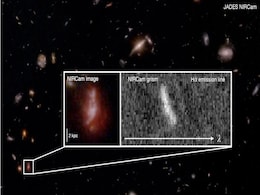
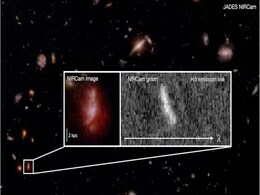
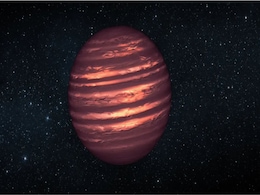

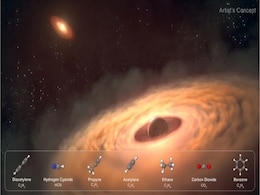
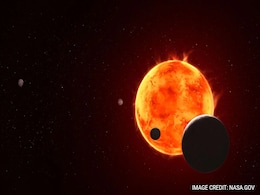
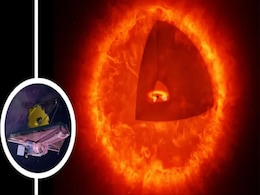
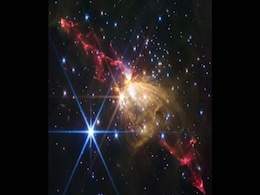
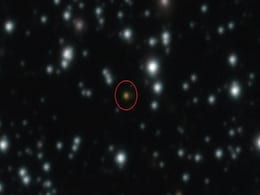
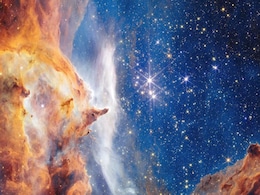
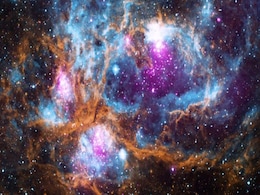
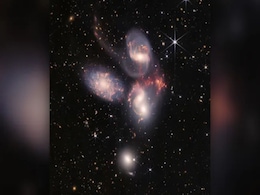
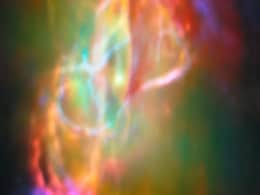
![Gadgets 360 With Technical Guruji: Did You Know? [April 6, 2024] Gadgets 360 With Technical Guruji: Did You Know? [April 6, 2024]](https://c.ndtvimg.com/2024-02/mpconh58_did-you-know_640x480_10_February_24.jpg?downsize=245:163)





